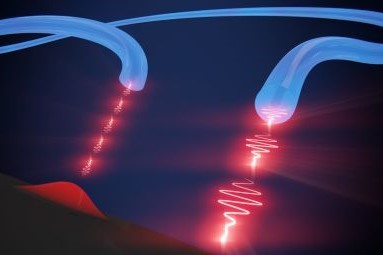Physicists from the University of Basel, Switzerland, and the Ruhr University in Bochum, Germany, have developed [...] a new type of single photon source that can produce billions of these quantum particles in one second. With a record-breaking performance to date, this source is becoming a new and powerful "standard block" for a range of quantum technologies, including quantum computing and communications technologies.
A key component of the new source is a quantum dot created on the basis of an" artificial atom " in a semiconductor material . Such quantum dots have long been used as photon sources, but all the photons produced by them usually fly away from their origin in random directions, which leads to the loss of most of them and to a decrease in the efficiency of the source as a whole.
In this case, the researchers managed to solve the problem described just above, the quantum dot was placed in a special "bell", so that almost all the photons produced by it are captured and sent in one given direction. This" bell " is the cavity of the microresonator, and the photons, which are about two centimeters long, come out of the optical fiber, the second end of which is located in the immediate vicinity of the resonator.
The efficiency of such a system, which is calculated as the ratio of the energy of photons ready for further use to the total energy spent, is 57 percent. This is more than twice as high as the efficiency of any similar source created earlier. At the same time, the efficiency and power of quantum computing systems based on such sources will exceed the efficiency of systems based on other sources by orders of magnitude, since this dependence is very, very nonlinear.

